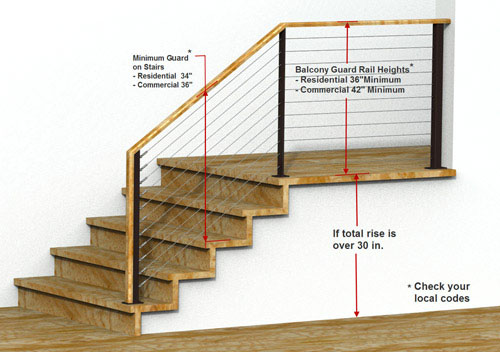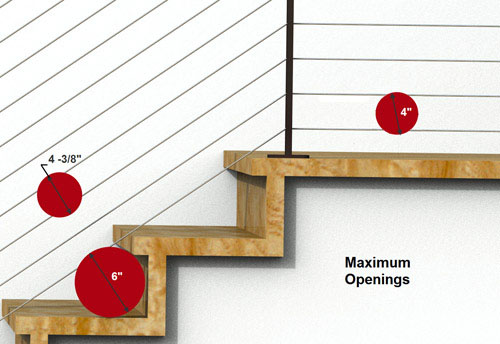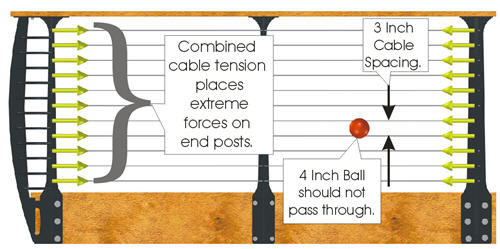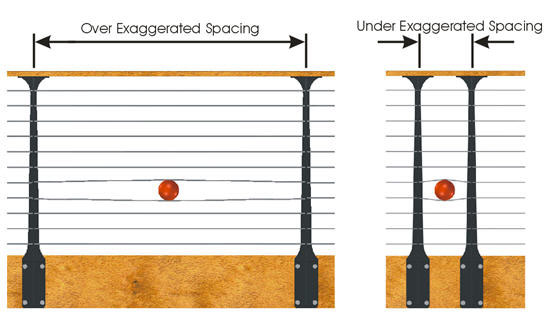Most municipalities in the U.S. have adopted the International Residential Code (IRC) and the International Building Code (IBC) for commercial buildings. These documents specify the rules for railing design and use. Below, you can see a brief overview of these railing building codes. However, railing code interpretations vary across the country, so it is imperative that you consult with your local code official before beginning any building project.
Guard Rails Building Codes:
Guard rails provide protection from falls. Generally, they are required on balconies, stairs, ramps, and landings that are above 30″ high. In most states, top rails must be 36″ high for residential buildings and 42″ high for commercial. Staircase railing height is measured from the surface of the tread vertically to the surface of the top rail.

Handrails:
Handrails are horizontal or sloped rails intended for grasping by the hand for guidance or support. Handrail heights should be between 34-36″ above the nose of the tread.
Guard Rail Openings:
Where guard rails are required on balconies, openings in the railings are restricted to an area that can prevent the passage of a sphere with a 4″ diameter. On stairs, the sphere size is slightly larger (see illustration below). In the current IBC and IRC railing codes, the 4″ ball rule is not a test “under load” rule. The interpretation of the dimensional test can vary, so you should always consult with your local code official before starting your project.

Note that the railing code requirements differ for pitched versus level railings.
Post Spacing:
Post-to-post spacing, post rigidity, and cable tension all work together in a system to prevent a 4″ diameter sphere from passing through the cables. We space our cables 3″ apart and recommend a maximum post-to post-spacing of 42″. See the illustration below.



